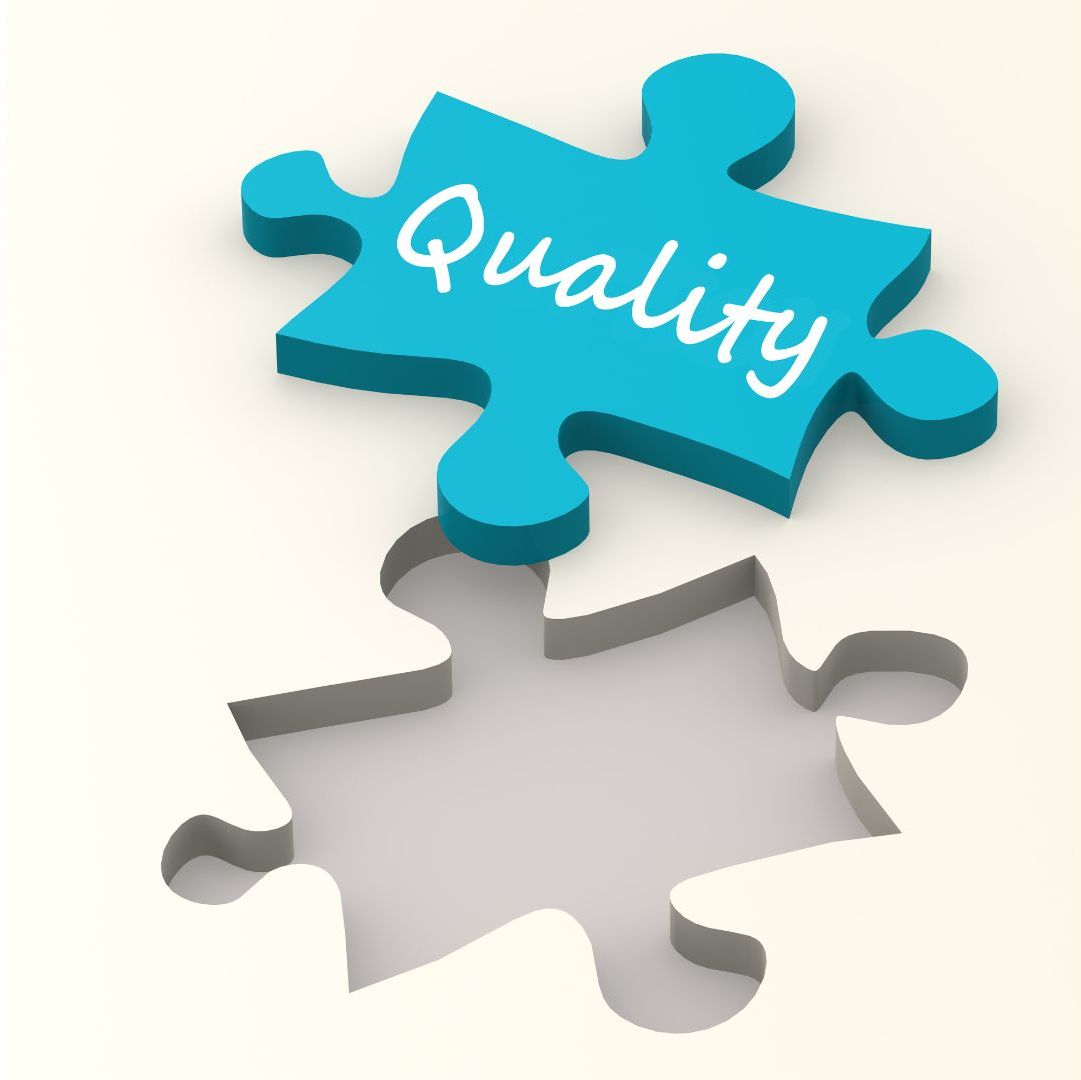Transcription Quality Assurance: Guarantees and Warranties?
Transcription Quality Assurance: What Guarantees and Warranties Should You Expect?
In our fast-paced digital world, the demand for accurate transcription services has surged across various sectors like academia, healthcare, legal, journalism, podcasting, human resources, and more. As researchers, postgraduate students, health practitioners, legal professionals, journalists, podcasters, human resource managers, and others increasingly rely on transcribing audio and video recordings, the question of transcription quality assurance becomes paramount. But what guarantees and warranties should you expect from a transcription service? This article delves into the crucial factors you should consider to ensure the quality of transcription meets your specific needs.
Key Questions to Consider
- What are the benchmarks for transcription quality and accuracy?
- How does the service handle varying audio qualities or accents?
- What are the privacy and data protection measures in place?
- How flexible and customisable are the services offered?
10 Benchmarks For Transcription Quality
#1 Accuracy Standards
Transcription quality assurance starts with accuracy. A top-tier service should guarantee a high accuracy rate, often above 98%. This is critical in fields like legal and healthcare, where precision is non-negotiable.

When considering transcription services, accuracy standards are paramount. A premium transcription service prides itself on delivering a high accuracy rate, typically above 98%. This level of precision is especially vital in sectors such as legal and healthcare, where the slightest error can have significant consequences. For instance, in legal proceedings, an inaccurate transcript could misrepresent testimony, leading to wrongful judgments. Similarly, in healthcare, precise transcription of medical records is crucial for patient care and legal compliance.
However, achieving this high level of accuracy is not a simple feat. It involves a combination of skilled transcribers who are proficient in the relevant jargon and context of the field, and the use of advanced technology to ensure consistency and accuracy. Additionally, the process often involves several layers of transcription quality checks, where transcripts are reviewed and corrected if necessary. This meticulous approach ensures that the final product is not only accurate but also reliable, making it a trusted resource in critical fields.
#2 Turnaround Time
Reliable transcription services offer clear guarantees regarding turnaround times. This is vital for journalists or podcasters working under tight deadlines.
Turnaround time is a critical aspect of transcription services, especially for professionals like journalists and podcasters who often work under strict deadlines. A reliable transcription service understands the importance of time and offers clear guarantees regarding the speed of delivery. This commitment to timely service is not just about meeting deadlines; it’s about enabling clients to maintain their workflow and meet their professional obligations without unnecessary delays.
To ensure prompt delivery, top transcription services employ a sufficient number of skilled transcribers and use efficient workflow management systems. This organisation allows them to handle large volumes of work and deliver accurate transcripts within the agreed timeframe. Furthermore, some services offer different turnaround options, catering to various urgency levels. Whether it’s a standard delivery schedule or a rush job, the ability to choose provides clients with the flexibility to align the service with their specific time constraints.
#3 Confidentiality and Data Security
Transcription quality assurance isn’t just about the words; it’s also about how securely they’re handled. Compliance with local and international data privacy laws is a must.
In the realm of transcription, the assurance of confidentiality and data security is as crucial as the quality of the transcription itself. For many industries, such as legal, healthcare, and corporate, the information contained in audio and video files is often sensitive and requires strict confidentiality. Compliance with both local and international data privacy laws is not just a value-added service; it’s a necessity. This compliance ensures that clients’ confidential information is protected and that the service adheres to legal standards regarding data protection.
Secure transcription services employ various measures to safeguard data to provide transcription quality assurance. These measures may include encrypted file transfers, secure storage solutions, and strict access controls. Furthermore, transcribers often sign non-disclosure agreements, binding them to confidentiality. The adherence to these stringent security protocols assures clients that their information is handled with the utmost care and integrity, maintaining their trust and the service’s reputation.
#4 Handling of Diverse Accents and Dialects
A diverse team of transcribers is essential to handle various accents and dialects, ensuring high-quality transcriptions regardless of the speaker’s background.
Handling diverse accents and dialects is a critical aspect of providing high-quality transcription services. In a globalised world, audio and video files often include speakers from various regions, each with unique accents and dialects. A transcription service equipped with a diverse team of transcribers can more effectively handle this variety, ensuring that the transcripts are accurate and reflective of the speakers’ intended messages.
This diversity in the transcription team is not just about understanding different accents; it’s about cultural sensitivity and awareness. Transcribers who are familiar with specific dialects and cultural nuances can pick up on subtleties in speech that might be missed by others. This sensitivity ensures that the transcription is not only accurate in terms of words but also in conveying the speaker’s intended tone and context. For instance, certain idiomatic expressions or regional phrases might be misunderstood or incorrectly transcribed by someone unfamiliar with that particular dialect. Having a team with a broad range of linguistic and cultural backgrounds is therefore a significant asset in maintaining high transcription standards.
#5 Customisation Options
Whether it’s verbatim transcription or tailored formats, a service should offer customisation to meet different industry needs.
Customisation in transcription services is not just a feature; it’s a necessity for catering to the diverse needs of different industries. Whether clients require verbatim transcription, which includes every utterance and sound, or a more edited version that captures only the essential dialogue, the service must be adaptable.

This flexibility allows clients to receive transcripts that are tailored to their specific requirements, whether for academic research, legal proceedings, corporate meetings, or media production. Moreover, customisation often extends to formatting and style preferences. Different fields may have unique formatting standards, such as time-stamping for media or specific citation styles for academia. A transcription service that can adapt to these varied requirements demonstrates its commitment to client satisfaction and its versatility in handling a range of transcription tasks. This adaptability not only enhances the utility of the transcripts but also saves clients time and effort in further editing and formatting.
#6 Transcription Quality Control Processes
Look for services that have rigorous transcription quality control processes, including multiple levels of checks and edits.
Transcription quality control is a multi-layered process that ensures the final transcript is accurate, clear, and usable. Services that prioritise transcription quality control employ several stages of checks and edits. Initially, a skilled transcriber converts the audio to text, paying close attention to accuracy and consistency. Following this, the transcript may undergo a review by a second professional who checks for errors or inconsistencies, making necessary corrections.
This process might also include a final transcription quality assessment, focusing on ensuring that the transcript meets the specific requirements and standards of the client. These rigorous transcription quality control processes are indicative of a service’s commitment to excellence. They serve as a guarantee that clients receive a product that has been thoroughly vetted and refined, reflecting a high standard of professionalism.
#7 Integration with Technology
The integration of advanced technology and human expertise often leads to higher accuracy and efficiency in transcription.
The integration of technology in transcription services enhances both accuracy and efficiency. Advanced software and tools can assist in the initial stages of transcription, handling tasks like speech recognition and automatic transcription. However, the human element remains crucial, as technology alone often cannot fully grasp nuances, accents, and context-specific terminology.
The ideal approach is a synergy between technology and human expertise. Technology can handle the bulk of transcription quickly, while human transcribers review and refine the output, ensuring it meets quality standards. This combination not only speeds up the process but also maintains a high level of accuracy, leveraging the strengths of both technology and human skill.
#8 Customer Support and Communication
Responsive customer support is crucial for addressing any issues or specific requirements you might have.
Responsive customer support is a cornerstone of a reliable transcription service. It involves clear communication channels for clients to express their needs, ask questions, and provide feedback. Effective customer support ensures that any issues are promptly addressed, and client-specific requirements are fully understood and implemented.

Moreover, proactive communication from the service, like updates on the progress of transcription work or clarifications on specific points, can significantly enhance the client experience. It builds trust and demonstrates the service’s commitment to client satisfaction and service quality.
#9 Cost Transparency
Clear, upfront pricing without hidden fees is a sign of a trustworthy service.
Cost transparency is crucial in establishing trust between a transcription service and its clients. Clear, upfront pricing without hidden fees allows clients to make informed decisions and plan their budgets effectively. This transparency should extend to all aspects of billing, including how rates are calculated—whether per minute of audio, by word count, or through a flat fee structure. It’s essential for clients to understand exactly what they are paying for and to ensure that there are no unexpected charges later on.
Moreover, a transparent pricing model should also accommodate different service levels or customisation options. For instance, clients should be able to see how adding services like time-stamping or requiring a faster turnaround time affects the cost. By providing detailed pricing information, transcription services not only foster trust but also allow clients to tailor the service to their specific needs and financial constraints.
#10 User Reviews and Testimonials
Real user experiences can give insight into the reliability and quality of the service.
User reviews and testimonials play a significant role in assessing the reliability and quality of a transcription service. They offer insights into real-world experiences of past clients, providing an unbiased view of the service’s strengths and areas for improvement. Positive testimonials, particularly from clients in similar industries or with similar needs, can be a strong indicator of the service’s ability to deliver quality transcripts consistently.
However, it’s also important to consider the diversity and authenticity of these reviews. A wide range of reviews from various sectors can demonstrate the service’s versatility and ability to handle different types of transcription tasks effectively. Additionally, authentic, detailed reviews that go beyond generic praise and provide specific feedback can be more informative for potential clients. By carefully evaluating these reviews, clients can make a more informed decision when choosing a transcription service.
Key Tips to Ensure Transcription Quality
- Look for services with high accuracy rates and robust data security measures.
- Ensure the service can handle diverse accents and offers customisation.
- Verify their transcription quality control processes and technology integration.
- Read user reviews for real-world insights.
Way With Words offers highly confidential transcription services founded on quality assurance and complies with local and international data privacy laws.
When choosing a transcription service, it’s essential to weigh factors like accuracy, confidentiality, customisation, and cost. Remember, the best service is one that aligns with your specific needs and industry standards. For ultimate accuracy and confidentiality in transcription, consider Way With Words, renowned for its human transcription services and commitment to quality assurance.
More Transcription Quality Resources
For highly accurate and confidential transcription services, visit Way With Words. This service stands out for its human approach to transcription, ensuring adherence to quality assurance standards in every project.
What is quality assurance? See Wikipedia’s definition, as it relates to transcription quality.
